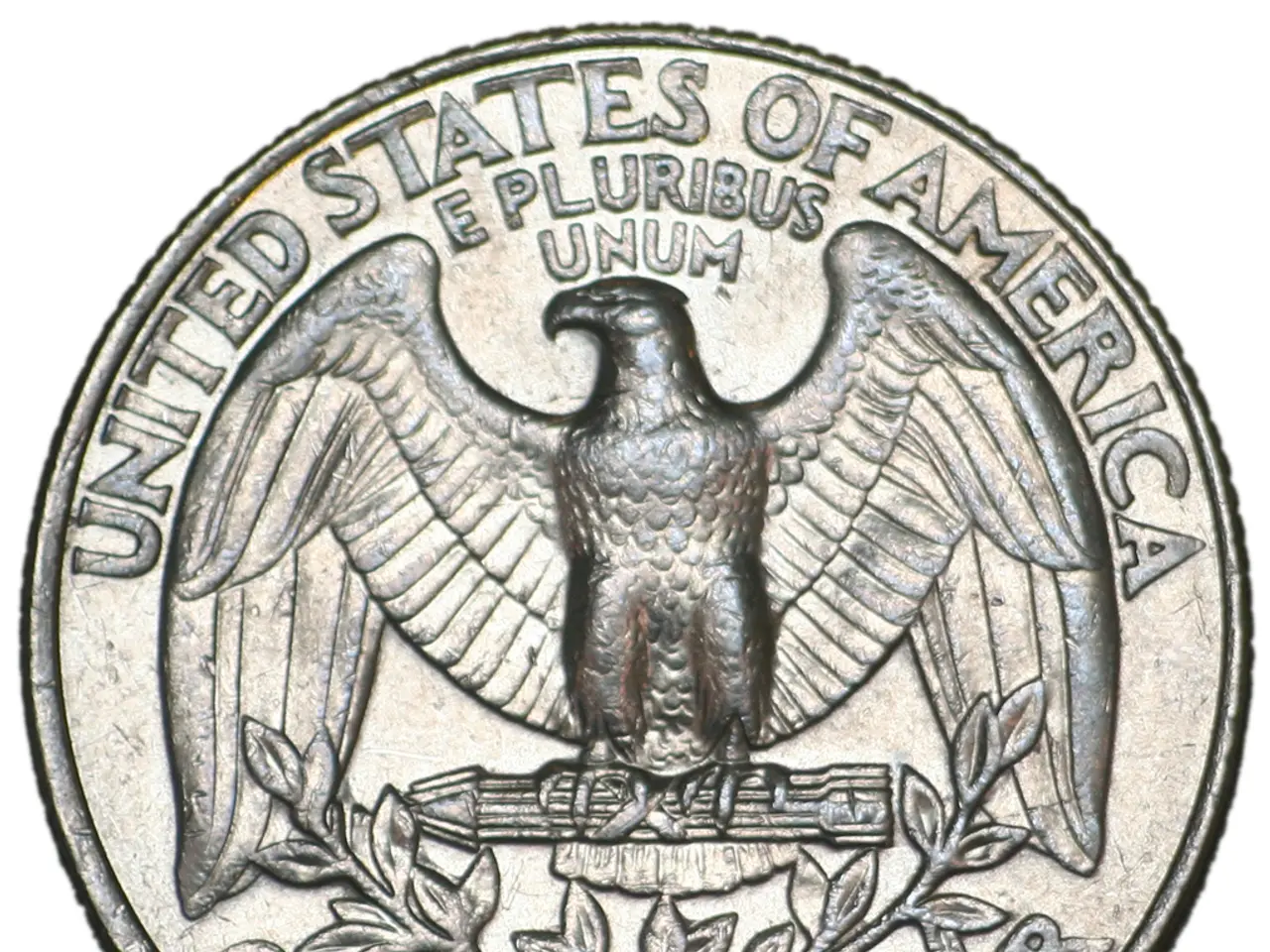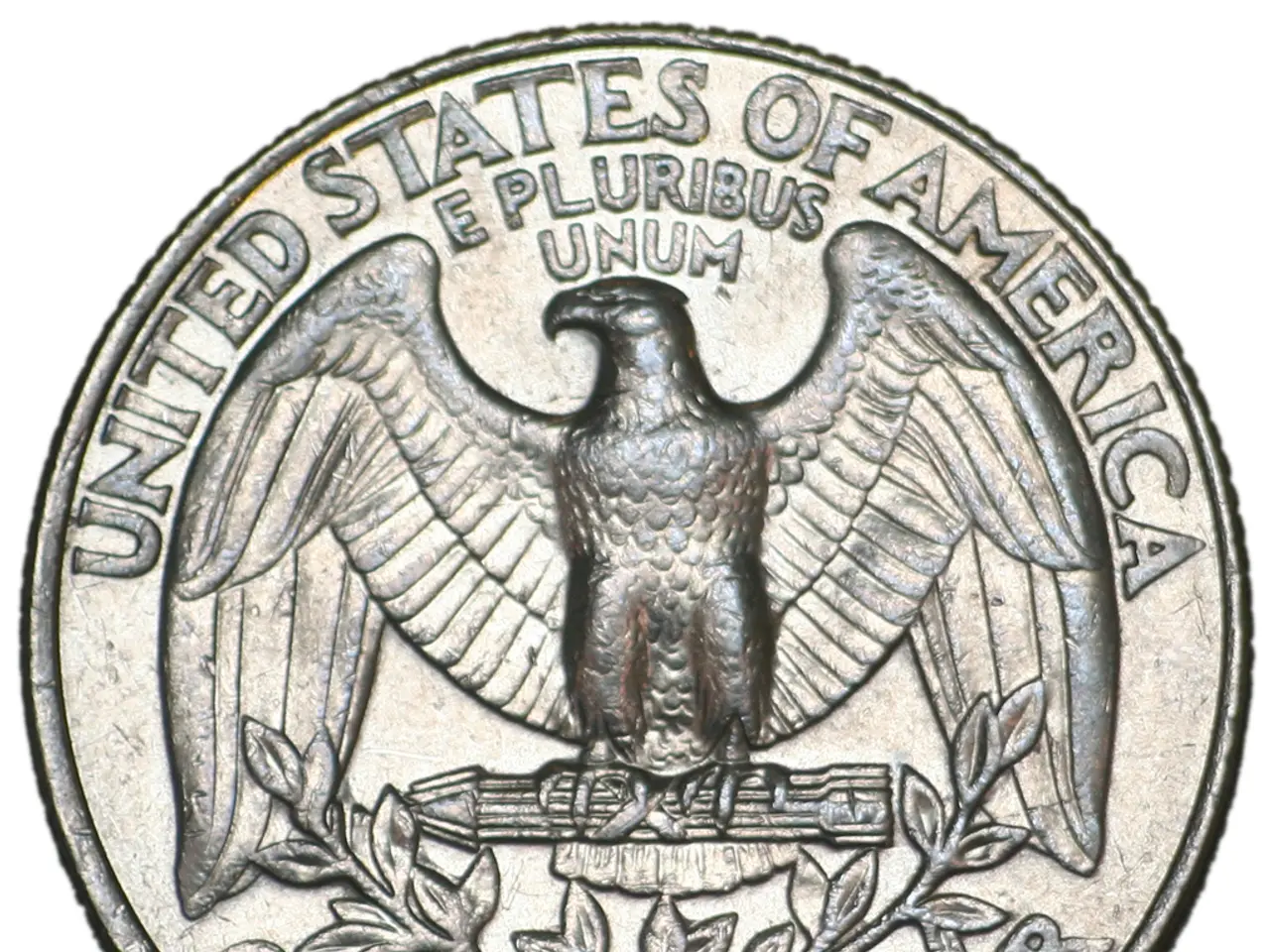Walmart's Stock Valuation Examined: An In-depth Analysis of WMT's Share Price Performance
In the ever-evolving world of retail, Walmart continues to be a dominant player, with its stock trading at a premium due to expectations of continued success in both its physical retail operations and its growing online presence.
However, Walmart's stock has shown significant volatility in recent times, a trend that has raised concerns among analysts. Some worry that Walmart's digital growth may slow as it reaches market saturation.
Despite these concerns, the consensus as of August 2025 does not point to Walmart’s stock being overvalued. Instead, the stock appears to be priced in line with fundamental expectations and market conditions, with moderate growth anticipated rather than a valuation bubble.
The average 2025 price target for Walmart's stock is around $100 to $107 per share, with forecasts ranging roughly between $81 (low) and $120 (high). This positioning suggests the stock is not considered overvalued but possibly slightly undervalued or fairly valued for steady growth.
Analyst sentiment remains mostly positive, with "buy" ratings dominating, reflecting confidence in Walmart’s diversified retail operations, stable consumer demand for essentials, and growth potential in eCommerce.
Walmart, with a market capitalization in the hundreds of billions, has been one of the most successful retail stocks for decades. However, external factors like rising competition, supply chain pressures, and consumer spending shifts could create headwinds that challenge the current valuation.
Increasing labor costs, supply chain issues, and a saturated retail market could impede Walmart's future growth. A high P/E ratio for Walmart might indicate that investors are pricing in future growth that may not materialize as expected.
However, Walmart's quarterly earnings reports have consistently shown solid results, with growth in revenue and net income. The company's aggressive push into e-commerce and innovations in supply chain technology have impressed investors.
The upcoming Q4 results will be critical in determining whether Walmart's stock can sustain its current valuation or if a correction is imminent. E-commerce performance in Walmart's Q4 report will be closely monitored due to continued investment in digital channels.
Investors are keen to see how Walmart is handling challenges like supply chain issues, inflation, and shifting consumer behavior in the upcoming Q4 results. Cost management and margins will be crucial for Walmart in Q4, given rising costs across the supply chain.
Questions remain about whether Walmart is truly undervalued or if its stock is simply riding the coattails of the broader retail and tech boom. Regardless, it is clear that Walmart's performance in the coming quarters will be closely watched by investors and analysts alike.
[1] Analyst Ratings, Walmart Inc., Yahoo Finance, August 2025. [2] Walmart Stock Price Targets, Walmart Inc., Zacks Investment Research, August 2025. [3] Walmart Stock Price Forecast, Walmart Inc., MarketWatch, August 2025. [4] Walmart Valuation Analysis, Walmart Inc., The Motley Fool, August 2025.
- Walmart's stock is anticipated to experience moderate growth, with a range of $81 to $120 per share and a median around $100 to $107, suggesting it might be slightly undervalued or fairly valued.
- The consensus among analysts is mostly positive, with buy ratings dominating, reflecting confidence in Walmart's diversified retail operations and growth potential in e-commerce.
- The ongoing digital growth of Walmart may slow as it reaches market saturation, raising concerns among some analysts about its future expansion.
- In order to maintain its current valuation, Walmart needs to demonstrate positive growth in e-commerce, supply chain management, and cost control in its upcoming Q4 results.
- External factors like rising competition, supply chain pressures, and consumer spending shifts could create headwinds and challenge Walmart's current valuation.
- Despite Walmart's strong physical retail operations and growing online presence, questions remain about whether its stock is truly undervalued or if it is simply riding the coattails of the broader retail and tech boom.
- Analyst sentiment is mostly positive, but increased attention will be paid to Walmart's ability to navigate the complex global supply chain infrastructure in the face of factors like inflation and shifts in consumer behavior.
- Personal finance investors should closely monitor the upcoming Q4 results, as they will provide valuable insights into Walmart's competitive position in the market, especially in the areas of e-commerce, cost management, and margin growth.




